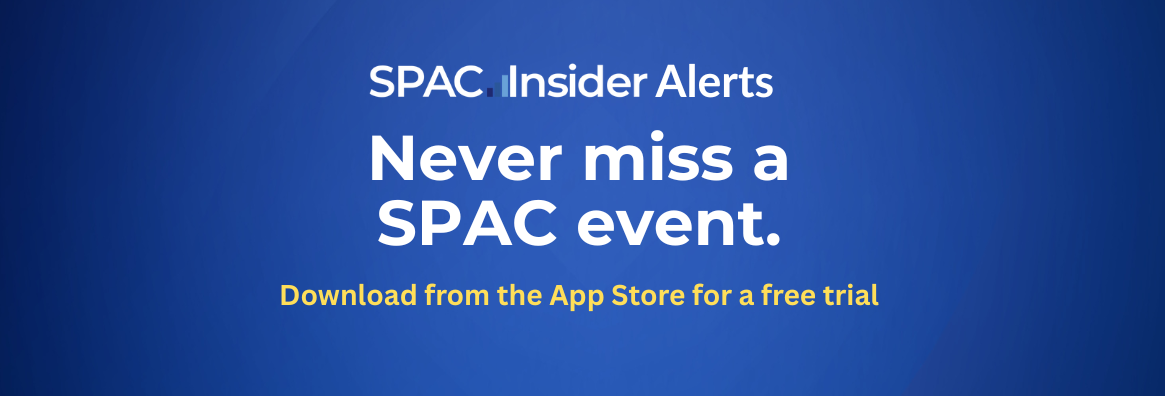NYSE vs. Nasdaq: The Emergence of A Delineation in Terms.
(Note: The below was a topic that was already discussed in the weekly subscriber email, but given that it is a very relevant topic we have updated the data and are re-posting to the site)
The NYSE put out a press release a week or so back, detailing their results for the first half of 2018. Of note, there were 41 IPOs raising $19.3 billion, of which six were SPACs (14.6%). Considering that the first ever NYSE SPAC listing occurred only a little more than a year ago with TPG Pace Energy (May 2017), this is significant. However, looking a little deeper into which SPACs get listed on the NYSE, you start to see a divergence in structures compared to the Nasdaq listed ones.

As you can see, the above are all 2018 SPACs that have listed on the NYSE (plus, Spartan Energy on file). With the exception of Union Acquisition Corporation, all are 100% in trust, 24 months to complete, the warrants are all 1/3 or 1/2 of a full warrant, and the unit does not include a right. They are also all quite large in size. Now let’s compare that to the Nasdaq listed SPACs.

With the exception of the three transactions I’ve highlighted in blue, which have the same terms as the NYSE listed SPACs, the Nasdaq listed SPACs tend to follow a different set of terms (again, only 2018 SPACs). The majority have a completion deadline less than 24 months with a full Warrant. However, if they do have a deadline of 24 months, those SPACs over-fund the trust. Additionally, none of the NYSE SPACs offer a Right, but five of the Nasdaq ones do.
Now, a lot of the difference can be attributed to size. To initially list on the NYSE, a SPAC needs to have a market value of at least $100 million, whereas for a Nasdaq listed SPAC it is approximately $45 million. Hence, the smaller SPACs list on the Nasdaq. But there is a clear delineation in terms. A year or so from now it will be really interesting to compare the performance of SPACs on one exchange versus the other. However, it’s unfortunately still too soon to gather any meaningful data on the NYSE SPACs since not enough of them have completed their combinations yet. But as of right now, the NYSE appears to be the exchange of choice for the deals that can command Tier-1 SPAC structures.
Additionally, you’ll notice that the NYSE is dominated by the Tier-1 banks. Tier-1 banks with Tier-1 structures for Tier-1 management teams. Not altogether a big surprise. However, again, SPACs are still relatively new to the NYSE. As I mentioned above, it’s only been a year since we had the first NYSE SPAC listing and the exchange is actively courting new SPAC business, so the second half of the year could see some changes to this list.
One other quick note on the topic of exchanges. Both the Nasdaq and the NYSE withdrew their proposals to the SEC to change the listing requirements for SPACs. The most important change being the reduction in the requirement of 300 round-lot shareholders to 150. Nasdaq removed their proposal first, in June, but the NYSE soon followed in early July. No reason as to why was given, but it appears it just wasn’t going anywhere since the SEC repeatedly requested additional information, ad nauseum. It’s unfortunate since this would have been a real game changer for SPACs, but as of today, it’s just not happening.


Vendome Acquisition Corporation I (NASDAQ:VNMEU) announced the pricing of its $200 million IPO and its units are expected to begin trading on the Nasdaq under the symbol “VNMEU”, Wednesday, July 2, 2025. The new SPAC plans to focus its search on target business in the consumer sector operating in North America, Southeast Asia, and Europe....
Origin Investment Corp. I (NASDAQ:ORIQU) announced the pricing of its $60 million IPO and its units are expected to begin trading on the Nasdaq under the symbol “ORIQU”, Wednesday, July 2, 2025. The new SPAC aims to mount a broad search for a target with a strong management and both revenue and earnings growth potential....
1RT Acquisition Corp. (NASDAQ:ONCHU) announced the pricing of its $150 million IPO and its units are expected to begin trading on the Nasdaq under the symbol “ONCHU”, Wednesday, July 2, 2025. The new SPAC plans to target company in the digital asset ecosystem involved in the creation, storage, exchange or management of such assets, whether...
D. Boral ARC Acquisition II Corp. (NASDAQ:ARBCU) has filed for a $250 million SPAC to give underwriter D. Boral a second in-house SPAC to pursue deals with. The new SPAC offers investors a 1/2 warrant and an initial 18-month time frame to complete a deal. D. Boral II’s sponsor may automatically extend this once by...
Ribbon (NASDAQ:RIBB) has entered into a definitive agreement to combine with Japanese biotech firm DRC Medicine at a pro forma equity value of $422 million. Tokyo-based DRC Medicine manufactures reusable anti-bacterial and anti-allergen wearables and aims to go deeper into the medical device and pharmaceutical space. Transaction Overview Ribbon is expected to provide $50.4 million...